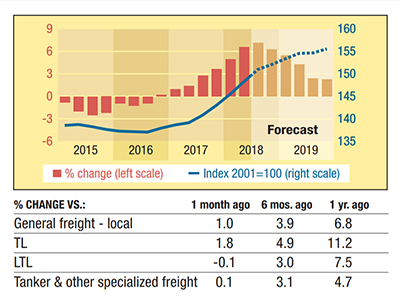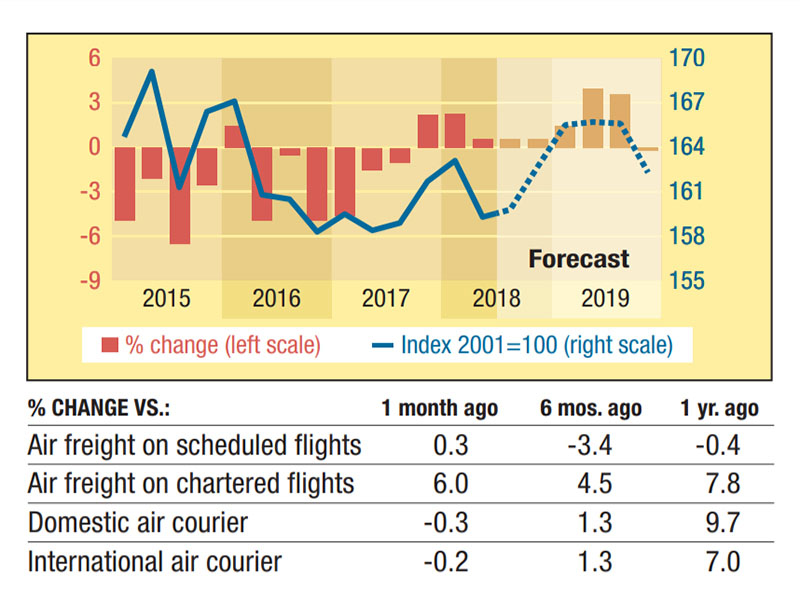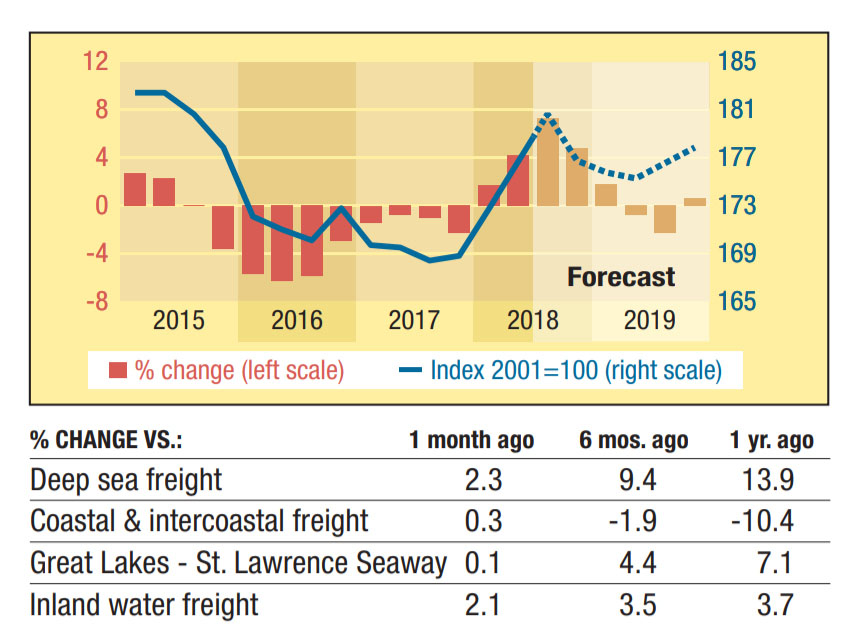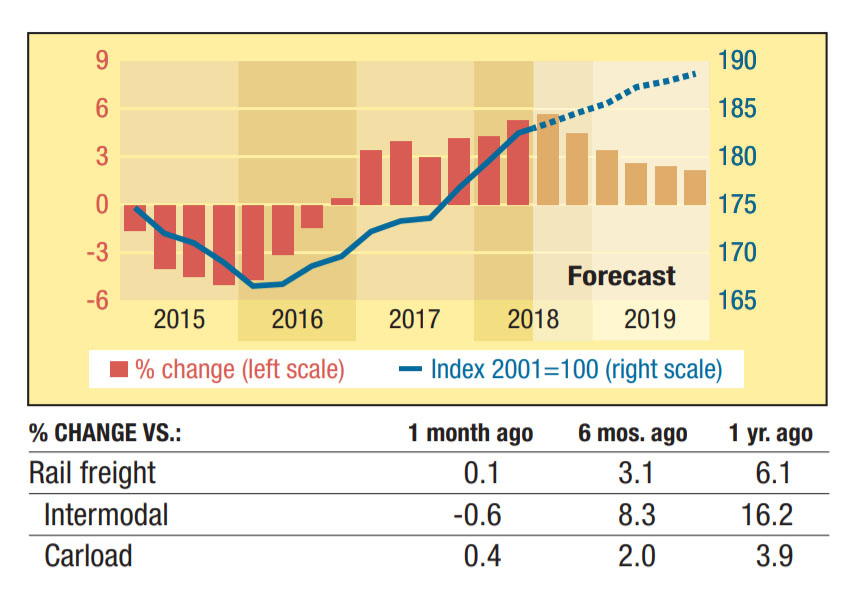Price Trends
Pricing across the transportation modes
Trucking
Long-distance truckload prices increased at a 7.8% pace in the first seven months of 2018 compared to a year ago. LTL followed the same route, up at a 7.4% rate. For the entire U.S. trucking industry, prices were up 6.2%.
Meanwhile, in the 12-month period ending June 2018, operating costs that had fallen also increased 5.2% thanks to a 23.6% surge in fuel costs. Our cost model estimates the industry’s labor costs grew 2.7% and warehousing costs jumped 5.3%.
Parsing price and cost data, we estimate that for every $100 worth of sales, the industry’s pre-tax mark-up now stands at $30.21. Looking ahead, trucking industry prices are forecast to rise 6.3% in 2018 and 3.6% in 2019.

Air
Among U.S.-owned airliners hauling cargo in the belly of planes on scheduled flights, average prices increased at a 1.3% annual pace in the 12 months ending in July. This was the seventh consecutive price hike, cementing a reversal from the 2015-2017 history of falling prices.
For chartered cargo flights, transaction prices also grew at a 5.4% annual pace. Cost inflation, however, has become a serious concern.
In the entire U.S. airline industry, costs are rising at a 6% annual pace as equipment and materials costs increased 8.6% and processing costs (labor and fuels) jumped 20.9%. Our forecast for air cargo on scheduled flights calls for prices to increase 1% this year and 2.2% next year.

Water
When examining prices year-to-date, it appears that a trend shift is emerging in at least one beleaguered waterborne cargo carrier market.
Most notably, reversing a 2.8% price decline in 2017, prices for service on barges and ships plying inland waterways increased 0.2% in the first seven months of 2018 compared to the same period a year ago.
At the same time, deep-sea price tags maintained a consistent 9.3% pace and Great Lakes cargo service prices grew 4.4%. The only divergent trend came from coastal and intercoastal freight where average prices fell 12.6%.
Looking ahead, we forecast average prices industry-wide will be up 4.8% in 2018 and 0.6% in 2019.

Rail
Price trends for rail services continue to impose ever-greater challenges for shippers.
According to the Bureau of Labor Statistics, the rail transportation industry’s average transaction prices increased 5% in the first seven months of 2018 compared to year-ago prices.
Most of the inflation push came from intermodal rail prices that grew 12.2% this year. That came on top of a 4.3% seven-month price hike in 2017. Carload tags, meanwhile, increased 3.4% in the first seven months of 2018, on par with a 3.4% price hike reported in the first seven months of 2017.
Looking at the industry’s expenses, our cost model shows worker wage inflation currently running at a 2.7% pace and fuel at a 23% pace.














